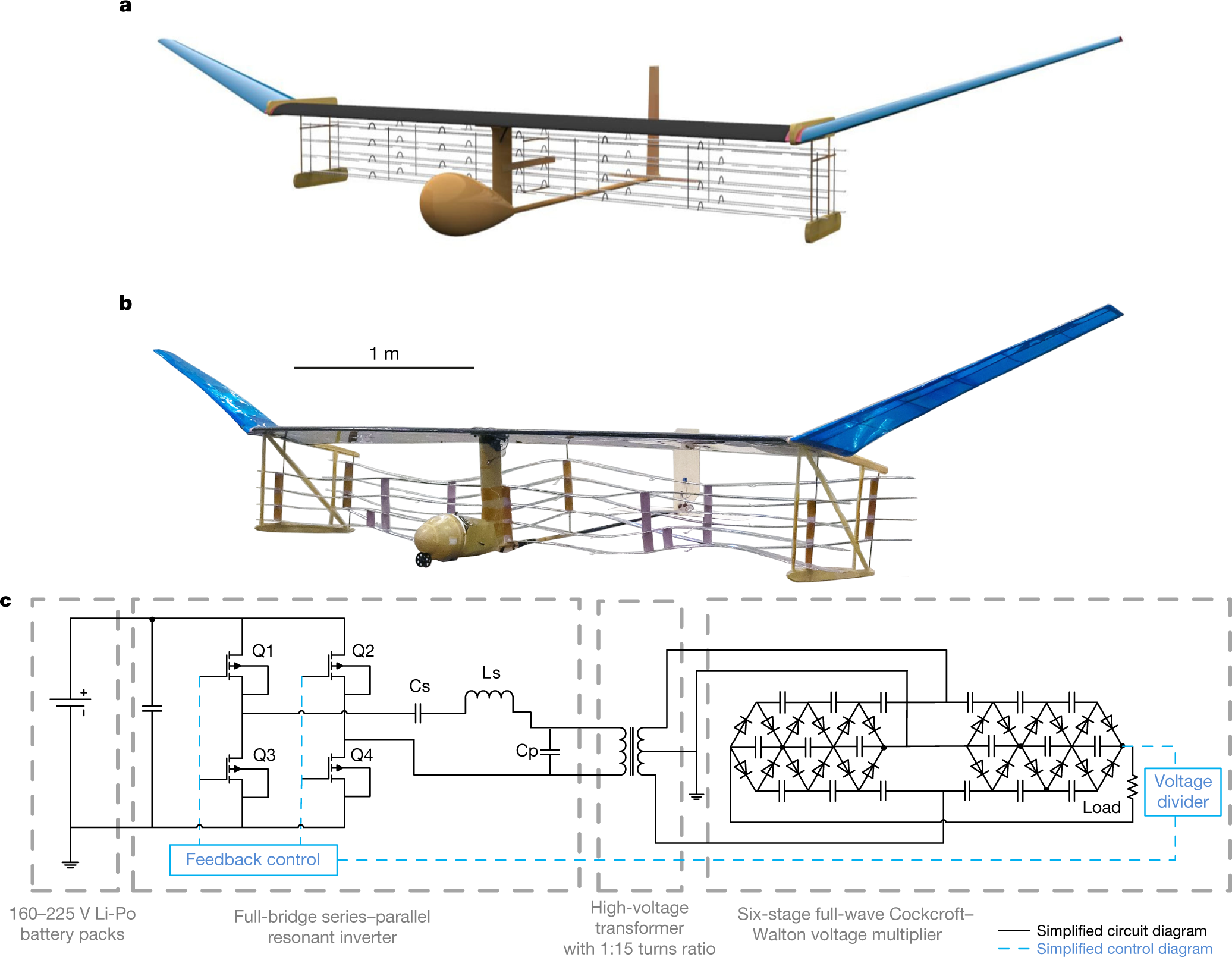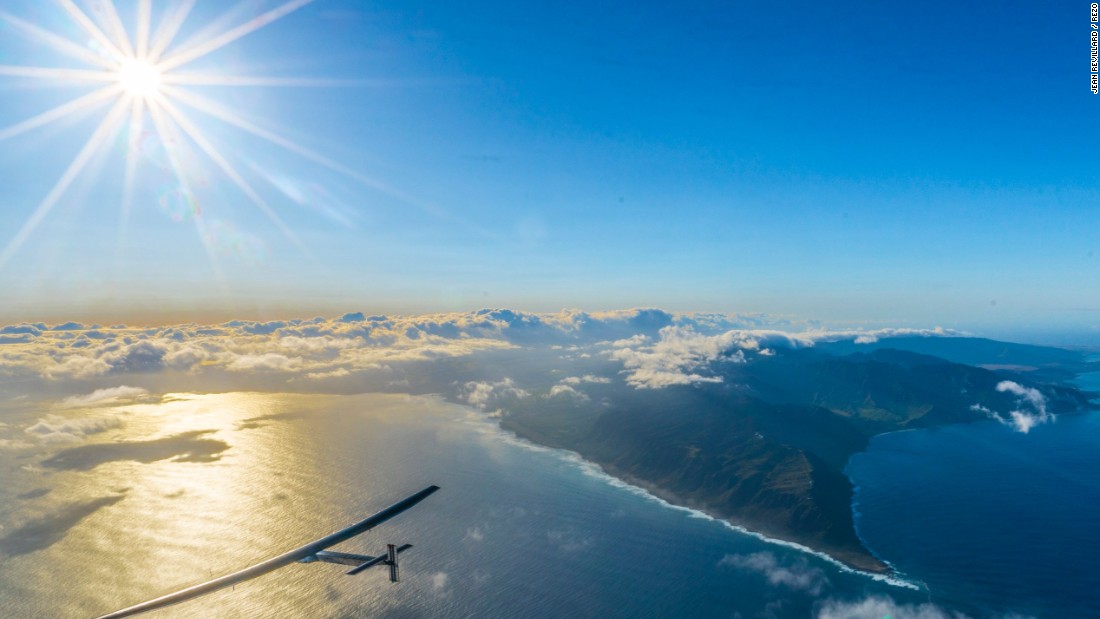Star Trek-inspired solid-state airplane takes to the sky without moving parts
Wikipedia may just have to change its definition of an airplane. According to the site, “An airplane or aeroplane (informally plane) is a powered, fixed-wing aircraft that is propelled forward by thrust from a jet engine, propeller or rocket engine.” They may want to rethink the portion that describes how planes are powered, thanks to MIT’s recently debuted and Star-Trek inspired plane that doesn’t use any of those forms of propulsion. No propellers, rockets, or jet turbines. This is just the beginning of the “no” list for this plane:
- No fossil fuels.
- No emissions.
- No noise pollution.
With a wingspan of 5 meters (16.4 feet), the new plane by MIT doesn’t have any of those less-than-desirable features since it has zero moving parts. Yes, it’s the world’s first solid-state plane. And last month, researchers at MIT successfully demonstrated its flight capabilities.
“This is the first-ever sustained flight of a plane with no moving parts in the propulsion system,” says Steven Barrett, associate professor of aeronautics and astronautics at MIT. “This has potentially opened new and unexplored possibilities for aircraft which are quieter, mechanically simpler, and do not emit combustion emissions.”
According to CNN, Barret found his inspiration in the TV series “Star Trek”, which featured spaceships that glided silently through space.

Time-lapse image of the flight, with white reference markers, spaced 5m apart horizontally. Image Credit: Barret et al. Nature.
Ionic Wind Propulsion
The plane is powered by a battery pack that applies a 20,000-volt charge to an array of wires that run the full 5-meter length of the wings with airfoils directly behind each of the wires that are charged to -20,000 volts. This voltage is similar to the voltage used to create sparks in spark plugs, but since the air gap for the plane is more than 10 times the air gap in spark plugs, the current doesn’t jump, or “spark”. Instead, the voltage strips electrons from the nitrogen molecules in the air which flow from the wires and across the airfoils. The flow of ions creates “ion drive”, or ionic wind, as the ions bump into air molecules. The ionic wind propels the plane.
This is the first aircraft to fly using a solid-state propulsion system. The research was recently published in the journal Nature.

Section a) shows a computer-generated rendering of the plane. Section b) is a photograph of the actual plane. Section c) shows the architecture of the high-voltage power converter. Image Credit: Barret et al. Nature.
Tracking the flight trajectories
The team from MIT flew the plane 10 times in a gym, using a bungee-powered launch system. To prove that ionic wind propulsion system worked, the researchers needed to show that the plane’s flight wasn’t due solely to the sling-shot start, so they tested the flight of the plane both with voltage was supplied to the wires and airfoils, and unpowered. The results from the 10 powered flights are shown in blue in section b) of the figure below. In each of the flights, the plane gained height for the first 8 seconds and flew for 50 or more meters. The unpowered flights never reached 10 meters in distance. The unpowered flights are shown in red. The plane did indeed fly thanks to the ionic wind system!

Section a) tracks an individual flight. Section b) shows the computer vision tracking results for both powered and unpowered plights. Image Credit: Barret et al. Nature.
To measure the flight, the team created a motion tracking system using three GoPro cameras situated perpendicular to the flight path in the gymnasium. The plane had LED lights, one red and one green, fixed to a pylon and the tail of the plane respectively. They used the images of the LED lights to track the plane during flight.
The lights were identified on each image frame using MATLAB Computer Vision Toolbox. The raw output images from the cameras were subject to lens distortion, which was corrected using the Image Processing Toolbox. In section a) of the above diagram, the resulting location of the red and green LED lights.
Proof of concept
This research shows ionic propulsion can work. Like any first, there’s more work to be done. But before we see ionic wind planes in airports, we may see conventional jets using this technology to improve their operation while decreasing jet noise. According to Forbes, “Scaling up to larger aircraft carrying people would require overcoming a number of technical hurdles that could take decades, but it’s possible that ion drives could be used near term in combination with conventional jet engines to improve efficiency.”
Improved jet engine efficiency and quieter. I’d say that’s a win-win.
Check out this video of this video that shows the first-ever flight of a “heavier-than-air” solid-state plane:
 Cleve’s Corner: Cleve Moler on Mathematics and Computing
Cleve’s Corner: Cleve Moler on Mathematics and Computing The MATLAB Blog
The MATLAB Blog Guy on Simulink
Guy on Simulink MATLAB Community
MATLAB Community Artificial Intelligence
Artificial Intelligence Developer Zone
Developer Zone Stuart’s MATLAB Videos
Stuart’s MATLAB Videos Behind the Headlines
Behind the Headlines File Exchange Pick of the Week
File Exchange Pick of the Week Hans on IoT
Hans on IoT Student Lounge
Student Lounge MATLAB ユーザーコミュニティー
MATLAB ユーザーコミュニティー Startups, Accelerators, & Entrepreneurs
Startups, Accelerators, & Entrepreneurs Autonomous Systems
Autonomous Systems Quantitative Finance
Quantitative Finance MATLAB Graphics and App Building
MATLAB Graphics and App Building








Comments
To leave a comment, please click here to sign in to your MathWorks Account or create a new one.